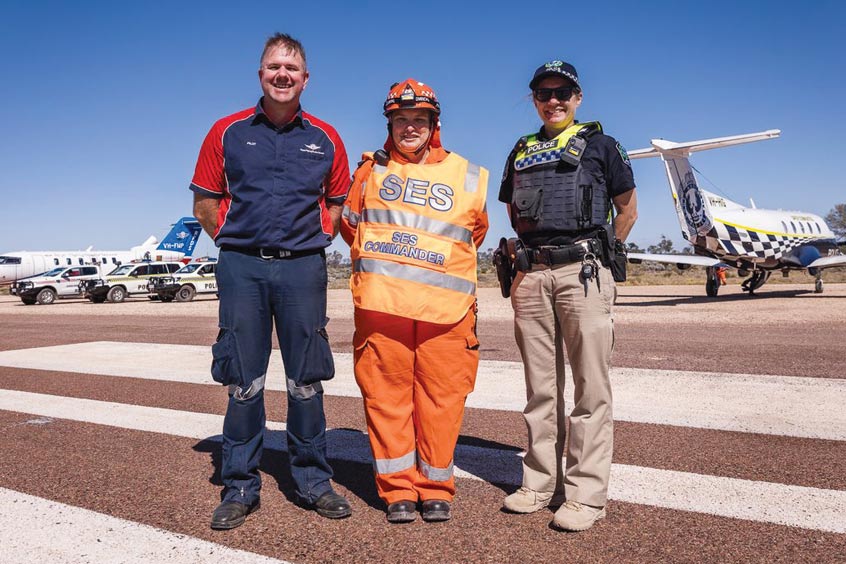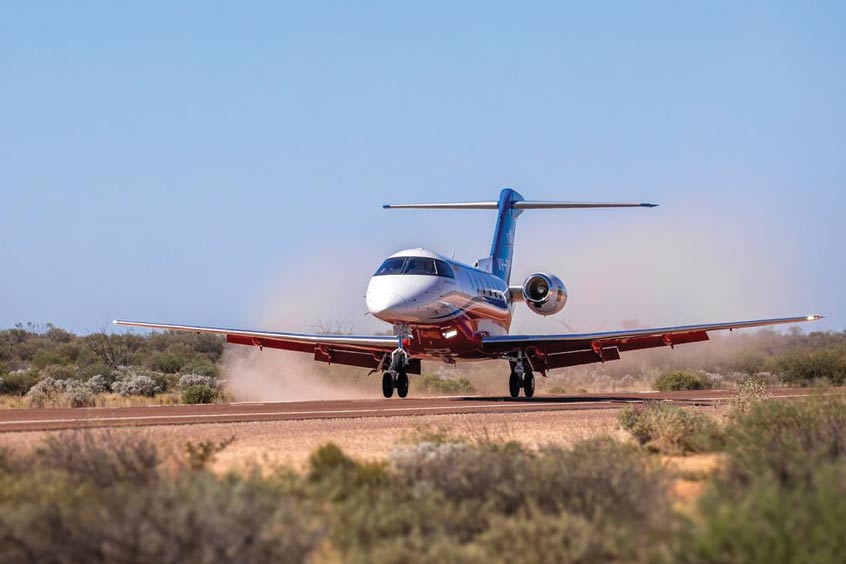ACE 2026 - The home of global charter.
 The bimonthly news publication for aviation professionals.
The bimonthly news publication for aviation professionals.



On Thursday, 27 April, 2023 Australian air ambulance operator Royal Flying Doctor Service (RFDS) performed the first 'highway landing' of an aeromedical jet on Australian soil. The milestone landing of the RFDS Medi-Jet 24 on the Stuart Highway in far north of South Australia state was performed as part of a joint training exercise conducted by the RFDS and South Australia Police (SAPOL).
Responding to a fictitious motor vehicle accident scenario, the scheduled exercise comprised two components: a desktop simulation of the activation and communications procedures between SAPOL, RFDS and State Emergency Service (SES) followed by the temporary closure of the Stuart Highway by local authorities to enable the landing of RFDS and SAPOL aircraft.
The RFDS Pilatus PC24 Medi-Jet 24 and SAPOL Pilatus PC12 aircraft landed on the Traeger Emergency Roadstrip near Glendambo, a designated 1,200m landing strip incorporated into the Stuart Highway, located 600 kilometres north of Adelaide and designed specifically for the RFDS and other airborne emergency services.
The world's first purpose-built aeromedical jet, the RFDS Medi-Jet 24, has the capacity to transport three stretchered patients and crew, and is ideal when responding to multiple-trauma incidents such as bus, multi-vehicle or workplace accidents. The $15 million aircraft, purchased using fundraising and donations from the community, has been used on sealed and remote unsealed airstrips but not yet used to land on a highway roadstrip
“Roadstrip landings are logistically complex, and require multi-agency collaboration and seamless coordination and communication between emergency services in the air and on the ground to perform quickly and safely," says RFDS SA/NT head of flight operations Damien Heath. “Today's collaboration with SAPOL and local emergency service partners ensures we are all response ready for those in the community when they need it most, not just with our turboprop aircraft but now also with our jet aircraft.”
The exercise was carried out with the cooperation of local authorities and transporters, who were informed ahead of time, with the highway temporarily closed under SAPOL protocols to ensure the safety of all involved. The RFDS and SAPOL would like to extend thanks to commuters for their patience and understanding during the short road closure.
“Today's exercise was a great example of all the emergency services in South Australia coming together as a team to practise their roles and responsibilities to provide the best response for the community should they get in trouble in a remote part of the state," says SAPOL senior sergeant Angus McFarlane. “I appreciate the public has had a short wait while we closed the highway to ensure that both aircraft landed safely, and their patience is greatly appreciated."
SA's second highway roadstrip, Chadwick Emergency Roadstrip, is located on the Eyre Highway near the SA-WA border. Chadwick was used last month when the RFDS landed one of its turboprop PC12 aircraft to airlift a critically-injured man following a single motor vehicle accident. RFDS has used its turboprop aircraft to land on highway roadstrips for decades.